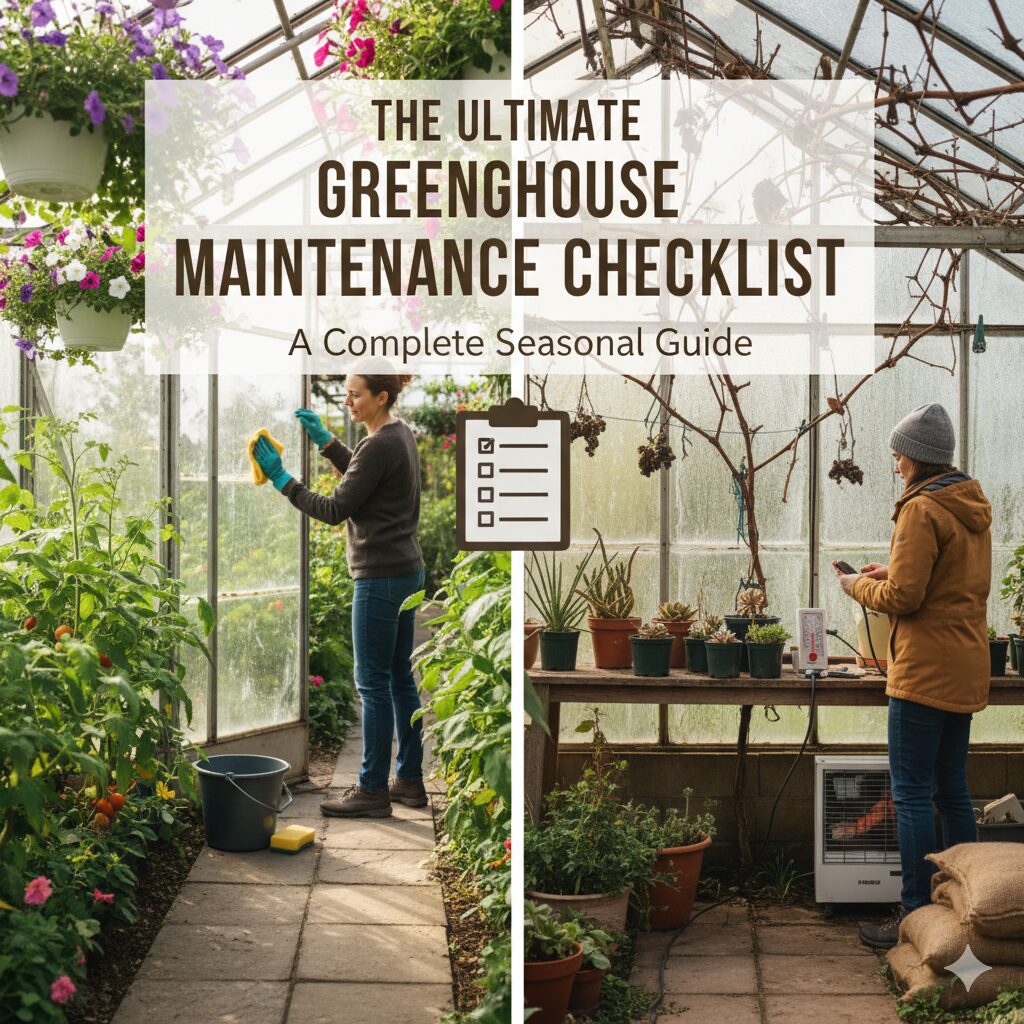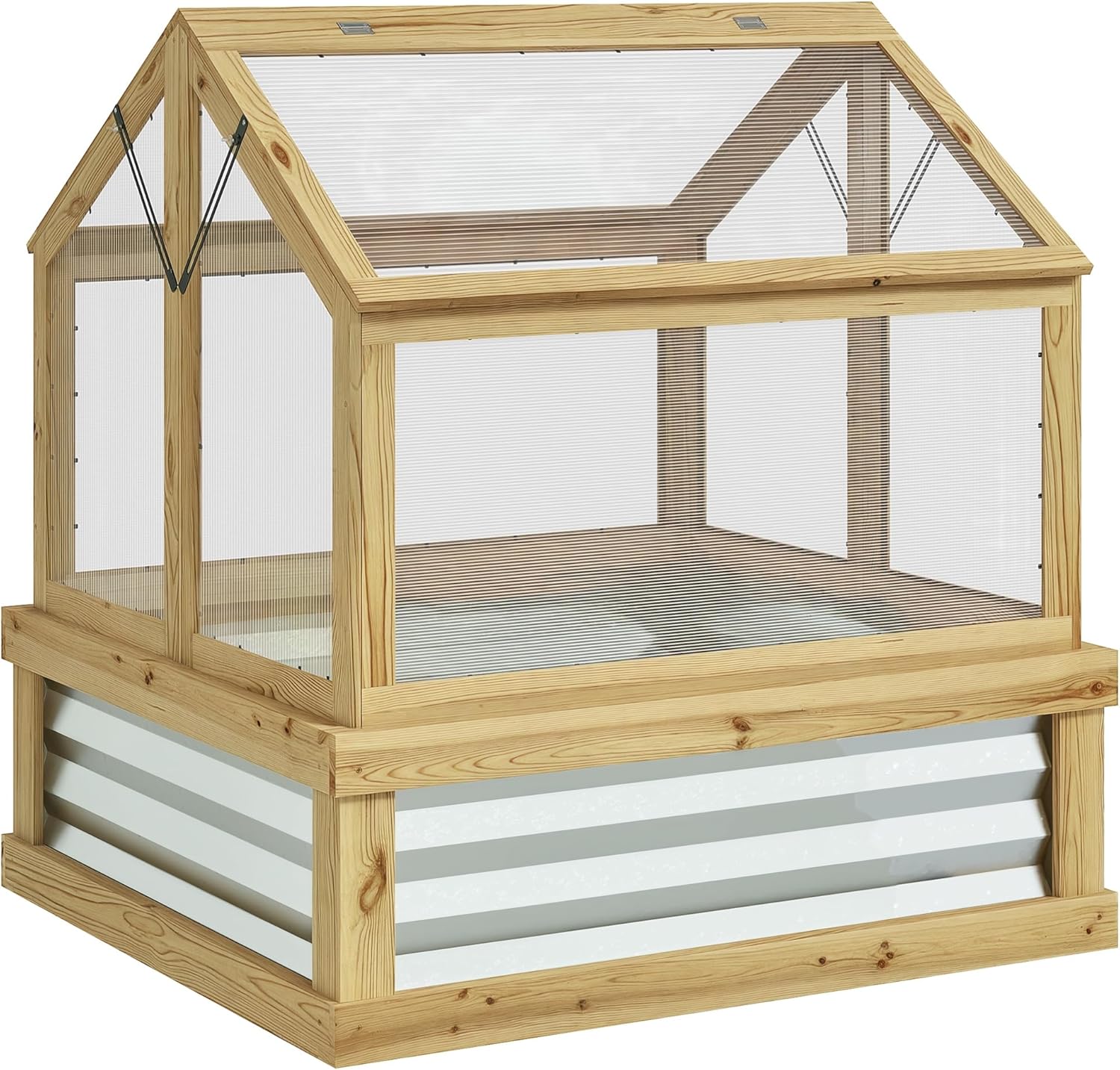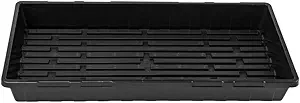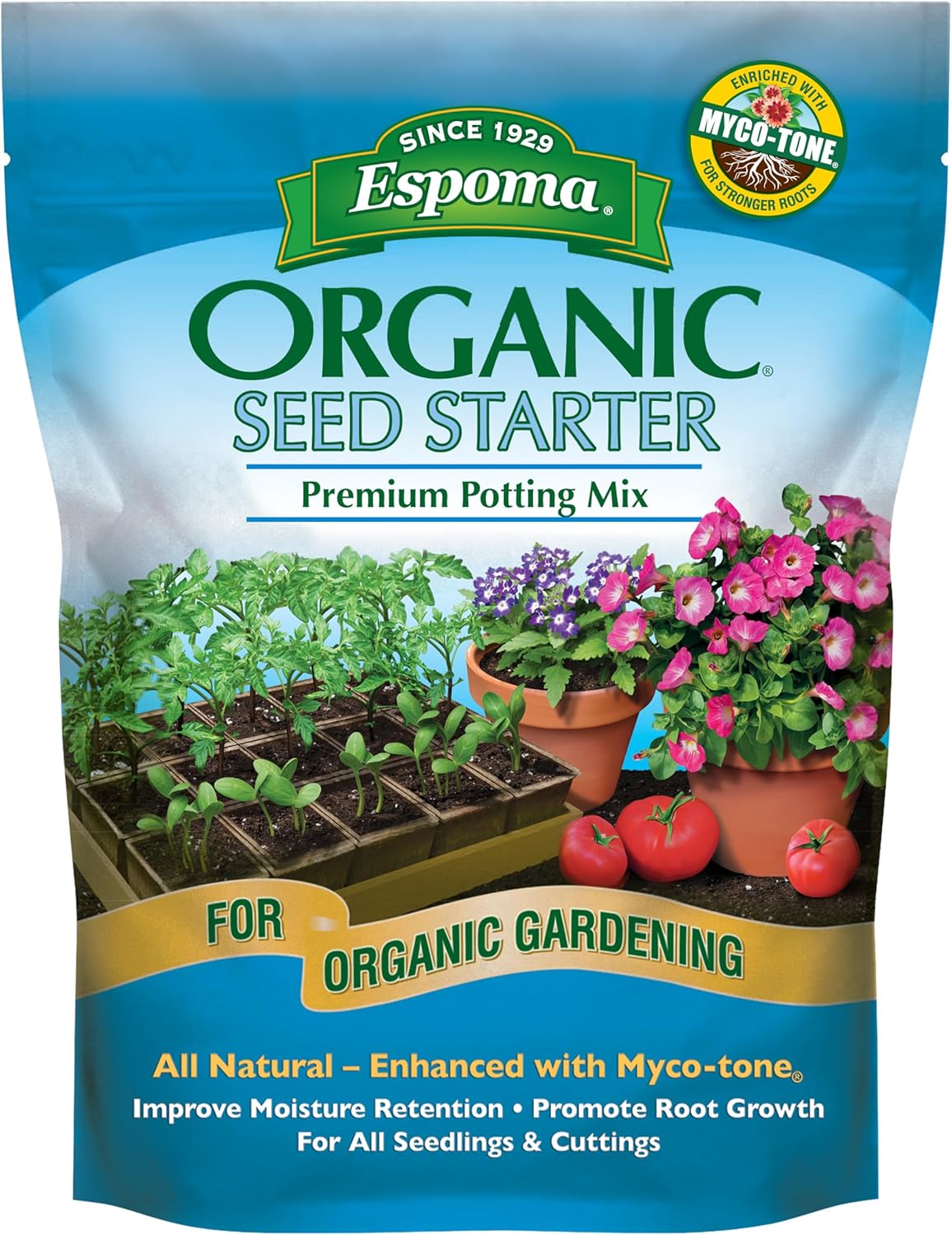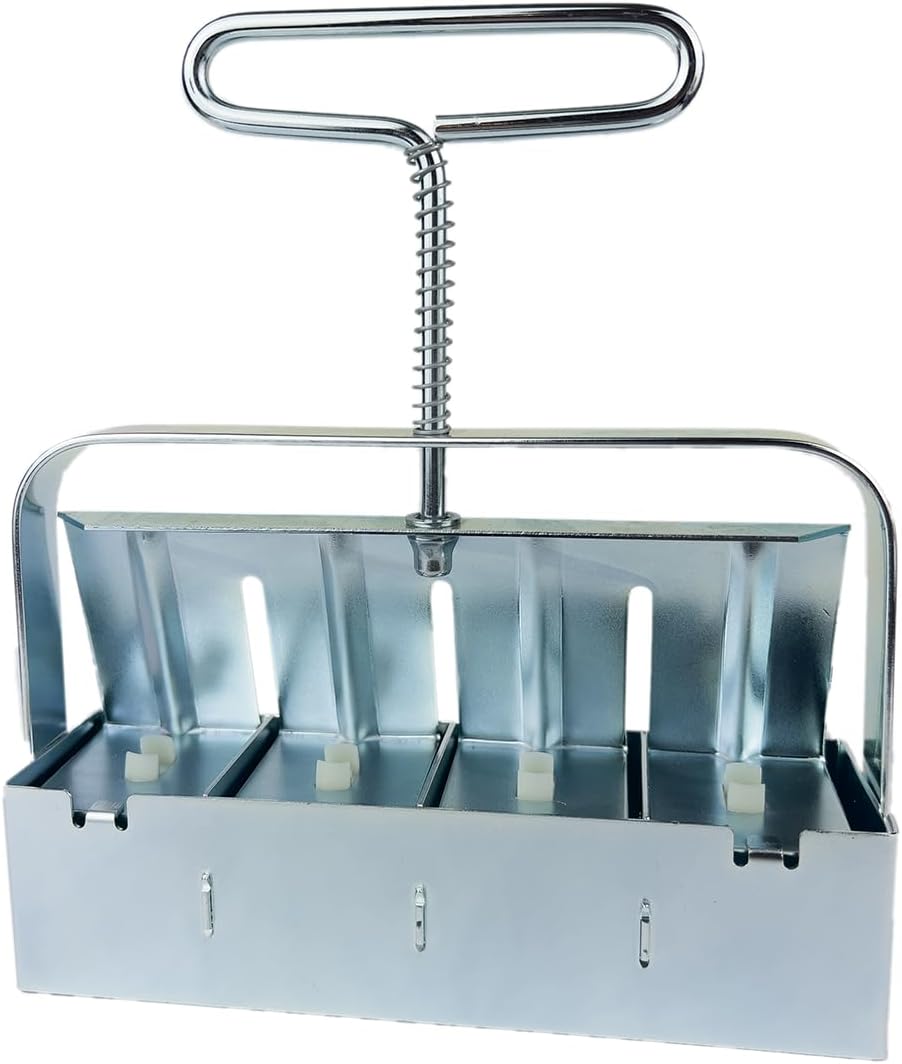Affiliate Disclosure: Our green-thumbed team is passionate about helping you grow. This post contains affiliate links. If you purchase products through our links, we may earn a commission at no extra cost to you. This supports our expert research and hands-on testing. We only recommend products we use and trust in our own greenhouses.
The Ultimate Greenhouse Maintenance Checklist: A Complete Seasonal Guide
Owning a greenhouse is a gardener’s dream, a personal Eden where you can extend seasons, cultivate exotic plants, and escape into a world of vibrant green. From our own experience, we know the joy of harvesting sun-ripened tomatoes in May or tending to delicate orchids while snow falls outside. But a greenhouse is not a “set it and forget it” structure. It’s a high-performance growing environment that, like a finely tuned car, requires regular maintenance to operate at its peak. Neglecting this crucial upkeep is one of the most heartbreaking—and common—mistakes a gardener can make.
A proactive maintenance routine is your best defense against catastrophic failures. It prevents small issues, like a tiny tear in the cover or a clogged irrigation emitter, from snowballing into major problems like a pest infestation, a widespread fungal outbreak, or even structural damage during a storm. This guide is born from years of our own trials, errors, and successes. We’ve learned the hard way what happens when you don’t clean your glazing before winter, or when you fail to check your ventilation fans before the first summer heatwave. This is the comprehensive, season-by-season checklist we wish we’d had from day one. It’s designed to be your trusted companion, helping you protect your investment and ensure your greenhouse remains a productive sanctuary for years to come.
Why This Checklist is Your Most Important Gardening Tool
Before we dive into the seasonal tasks, it’s vital to understand *why* a structured maintenance plan is so critical. It’s not just about cleaning; it’s about creating an optimal and resilient growing environment.
- Disease and Pest Prevention: A clean greenhouse is a healthy greenhouse. Old plant debris, algae, and standing water are breeding grounds for fungal spores and pests. Regular sanitization breaks this cycle.
- Optimized Light Transmission: Dirty, grimy glazing can reduce light transmission by up to 30%, starving your plants of the energy they need to thrive. Clean covers mean more vigorous growth.
- Structural Longevity: Regular inspections allow you to catch loose bolts, small tears, or foundation shifts before they compromise the entire structure, especially before heavy snow or high winds.
- Equipment Efficiency and Safety: Maintained fans, heaters, and irrigation systems run more efficiently, saving you money on electricity and water. It also prevents potential electrical hazards or catastrophic leaks.
- Higher Yields and Healthier Plants: Ultimately, every task on this list contributes to a stable, clean, and efficient environment. Plants grown in these conditions are less stressed, more resilient, and far more productive.
Essential Tools & Supplies for Greenhouse Maintenance
Having the right tools on hand makes maintenance a smooth, efficient process. Fumbling for a wrench or using the wrong cleaner can turn a simple task into a frustrating chore. Based on our experience, these are the must-have items, all readily available on Amazon.
Cleaning & Sanitizing
Shop Extendable Brushes on Amazon
Shop Horticultural Cleaners on Amazon
Shop Pump Sprayers on Amazon
Repair & Structural
Shop Repair Tape on Amazon
Shop Silicone Sealant on Amazon
Shop Tool Sets on Amazon
Systems & Pest Control
Shop Insecticidal Soap on Amazon
Shop Sticky Traps on Amazon
Shop Shade Cloth on Amazon
The Seasonal Greenhouse Maintenance Checklist
We’ve broken down the essential tasks by season. Spring and Autumn are the major “deep clean and prep” seasons, while Summer and Winter are focused on monitoring and climate control.
Spring Kickstart Checklist: The Great Reset
Spring is the most critical maintenance season. This is your chance to reset the entire environment, ensuring a clean, healthy start for your most productive growing period.
1. Conduct a Full Structural Inspection
Winter can be harsh. Snow, ice, and wind can take a toll on your greenhouse frame and foundation. Before you do anything else, perform a thorough top-to-bottom inspection.
- Check the foundation for any heaving, cracking, or shifting.
- Inspect the entire frame, tightening any loose nuts, bolts, or screws. Look for signs of rust on steel frames or rot on wooden ones.
- Test all doors and vents to ensure they open and close smoothly. Lubricate hinges and tracks as needed with a silicone-based lubricant.
2. Empty and Deep Clean All Surfaces
This is the most labor-intensive but most important task. Pathogens and pest eggs can easily overwinter on dirty surfaces. Start with a completely empty greenhouse if possible.
- Remove all old plants, weeds, and leftover growing media. Dispose of any diseased plant matter far from the greenhouse.
- Sweep down all surfaces, from ceiling to floor, to remove dust and cobwebs.
- Scrub all surfaces—glazing, frame, benches, floors, and empty pots—with a greenhouse cleaner or a 10% bleach solution. Let the solution sit for 10 minutes before rinsing thoroughly with clean water.
3. Inspect and Repair Glazing/Covering
Your greenhouse covering is its most important feature. Now is the time to ensure it’s clean and intact for maximum light and protection. A deep dive into a greenhouse plastic vs glass comparison will show you that different materials have different maintenance needs, but all benefit from a thorough spring cleaning.
- Wash all glazing panels, inside and out, with your soft-bristle brush and a mild, greenhouse-safe soap. This single act can dramatically increase light levels.
- For poly-film covers, carefully inspect for any small rips or tears. Patch them immediately with greenhouse repair tape to prevent them from spreading.
- For polycarbonate or glass panels, check for cracked panes or failing sealant around the edges. Reseal any gaps with UV-resistant silicone sealant.
4. Service Your Climate Control Systems
Your fans and vents are about to start working overtime. Ensuring they’re ready is critical. The debate over greenhouse fan vs vent: which is better? is ongoing, but whichever you have, it needs to be in top shape for the coming heat.
- Wipe down fan blades and shrouds. Clean any intake shutters and screens of dust and debris.
- Test all fans and automated vent openers. Ensure thermostats are responding correctly.
- Check your heating system (if you have one) and make sure it’s ready to be shut down for the season.
5. Overhaul Your Watering System
An efficient watering system is the heart of a productive greenhouse. Spring is the time to flush, clean, and reconfigure it. This is the perfect time to upgrade to one of the best drip irrigation kits if you haven’t already, as they are far more efficient than hand-watering.
- Flush the entire system by removing the end caps and running water through for several minutes to clear out sediment.
- Clean or replace the main filter. This is the most common point of failure in a drip system.
- Inspect all emitters and sprayers. Soak any clogged ones in vinegar or a CLR solution, then rinse thoroughly.
- Check for and repair any leaks in the tubing. Reconfigure your layout for the season’s new plantings.
Summer Peak Performance Checklist: Monitor and Protect
Summer maintenance is less about overhauling and more about active monitoring. Your goal is to manage heat, humidity, and pests to keep your plants from getting stressed.
1. Weekly Pest & Disease Scouting
Pest populations can explode in the heat and humidity of a summer greenhouse. Early detection is everything. Knowing how to stop whiteflies in greenhouses, for example, starts with spotting the first few adults before they lay thousands of eggs.
- Dedicate time each week to carefully inspect your plants, especially the undersides of leaves, for common pests like aphids, spider mites, and whiteflies.
- Use yellow sticky traps to monitor flying pest populations. Replace them when they become full.
- At the first sign of trouble, act immediately with insecticidal soap or other appropriate treatments. Remove any heavily infested or diseased leaves or plants.
2. Daily Climate Control Checks
Summer heat is a greenhouse’s biggest enemy. One failed fan on a 90°F day can cook your entire crop. This is one of the most common greenhouse mistakes to avoid.
- Every morning, ensure your ventilation system (fans and/or vents) is set to operate correctly.
- Check your shade cloth to ensure it’s secure and providing adequate coverage during the hottest part of the day (typically 11 am – 4 pm).
- Monitor a max/min thermometer to see how hot your greenhouse is getting. If temperatures are consistently exceeding 90-95°F, you may need more ventilation or a higher percentage shade cloth.
3. Monthly System and Surface Cleaning
Even with a big spring clean, algae and grime can build up quickly in the summer.
- Once a month, give your glazing a quick wash to remove dust and pollen that can accumulate and block light.
- Wipe down fan blades and check irrigation filters, which can clog more quickly in the summer.
- Keep walkways clear and immediately clean up any spilled soil or plant debris.
Autumn Wind-Down Checklist: Harvest and Harden
As temperatures cool, your focus shifts from managing heat to preparing your structure and plants for the coming cold. This is your chance to clean up and fortify before winter arrives.
1. Final Harvest and Sanitation
Remove all summer annuals once they are finished producing. Don’t let dying plants linger, as they are magnets for disease and pests looking for a place to overwinter.
- Remove all spent plants and their root balls. Add non-diseased material to your compost pile.
- Clean and sanitize all used pots, seed trays, and tools. Store them neatly for the winter.
- Do a thorough sweep and wash-down of the greenhouse floor and benches to remove soil and organic debris.
2. Winter-Proof Your Structure
Now is the time to prepare for the worst that winter can throw at you. A small structural weakness can become a major failure under a snow load or in a winter storm.
- Perform another full structural inspection, tightening any bolts that may have loosened over the summer.
- Inspect and repair your covering again. A small hole can let in brutal, freezing winds. This is especially important for those who rely on the best greenhouse covers to protect their plants.
- Check all weather stripping on doors and vents and replace it if it’s cracked or worn.
3. Prepare Heating and Irrigation for Winter
If you plan on heating your greenhouse for winter growing, now is the time to service your heater. If not, you need to winterize your water systems.
- Inspect and test your heating system. Check fuel lines, electrical connections, and thermostats.
- If you are shutting down for winter, completely drain your irrigation system. Use an air compressor to blow out the lines to prevent water from freezing and cracking the tubing and fittings.
- Disconnect and drain all hoses and store them indoors.
Winter Care Checklist: Protect and Plan
Winter maintenance is primarily about protecting your structure and, if you’re growing, managing the unique challenges of the cold season. It’s also the perfect time to plan for the year ahead.
1. Monitor Snow and Ice Load
This is the number one cause of winter greenhouse collapse. Be vigilant.
- After every significant snowfall, check the snow depth on your roof. Use a soft-bristled broom or a snow rake to gently pull snow off the structure. Never let more than 4-6 inches of heavy, wet snow accumulate.
- Keep an eye out for ice buildup, especially around vents and doors, which can seal them shut.
2. Manage the Winter Growing Environment
Even in winter, a greenhouse is a place of possibility. With the right preparation, you can achieve greenhouse gardening year-round.
- If heating, monitor your thermostat and fuel levels closely. Check for drafts on cold, windy days.
- Even in winter, ventilation is important on sunny days to prevent overheating and reduce humidity.
- Maximize light by keeping the glazing clean of any dirt or snow.
- Browse seed catalogs and draw up your planting plan for the spring. Order seeds and supplies now before the rush.
3. Monthly Structural Check-in
Winter storms can reveal hidden weaknesses. Do a quick inspection once a month.
- Walk around and inside the greenhouse, looking for any new signs of stress, damage from wind, or leaks.
- Check that all stored equipment is secure and protected from moisture.
Printable Checklist Summary
Spring
- Full Structural Inspection
- Empty & Deep Clean
- Inspect/Repair Covering
- Service Climate Control
- Overhaul Watering System
Summer
- Weekly Pest Scouting
- Daily Climate Checks
- Monthly Surface Cleaning
Autumn
- Final Harvest & Cleanup
- Winter-Proof Structure
- Prep Heating/Irrigation
Winter
- Monitor Snow/Ice Load
- Manage Winter Environment
- Monthly Structural Check
- Plan for Spring
Frequently Asked Questions (FAQ)
Q1: What is the best and safest way to clean polycarbonate or poly-film panels without scratching them?
A: Never use abrasive cleaners, squeegees with hard edges, or harsh chemicals like ammonia or alcohol. The best method is to use a soft-bristle extendable brush or a microfiber mop head with a mild soap (like a gentle dish soap) and plenty of water. Rinse thoroughly with clean water afterward. This removes grime effectively without damaging the UV-protective coating on the panels.
Q2: How often do I really need to do a full “deep clean” and sanitization?
A: A full, empty-out deep clean and sanitization should be done at least once a year, ideally in the spring before you start your main planting. Many serious gardeners do it twice a year, in both spring and autumn, to create a sterile environment before winter growing and again before the main spring season. This is the single most effective step in preventing disease carryover.
Q3: I found a small tear in my polyethylene greenhouse cover. How do I fix it?
A: Address it immediately! Clean the area around the tear on both sides with a gentle cleaner and let it dry completely. Then, apply a piece of specialized greenhouse repair tape to both the inside and the outside of the tear, creating a “sandwich.” Using proper UV-stabilized repair tape is crucial, as regular packing tape will degrade quickly in the sun and leave a sticky residue.
Q4: What are the very first signs of a pest problem I should look for?
A: Look for the subtle signs. Check the undersides of leaves for tiny webs (spider mites), small white flying insects that burst up when you touch the plant (whiteflies), or clusters of tiny green or black dots (aphids). Yellowing or stippling on leaves is also a major red flag. Using yellow sticky cards is a great proactive measure, as they will catch the first few flying pests, alerting you to their presence before you can even see them on the plants.
Final Thoughts: Your Greenhouse’s Long-Term Health Partner
Think of this checklist not as a chore, but as a partnership with your greenhouse. Every task you complete is an investment in its health, longevity, and productivity. By staying proactive and making maintenance a regular, seasonal habit, you transform your greenhouse from a simple structure into a thriving, resilient, year-round garden. The peace of mind that comes from knowing your investment is protected and your plants are in an optimal environment is the greatest reward for any dedicated gardener.

